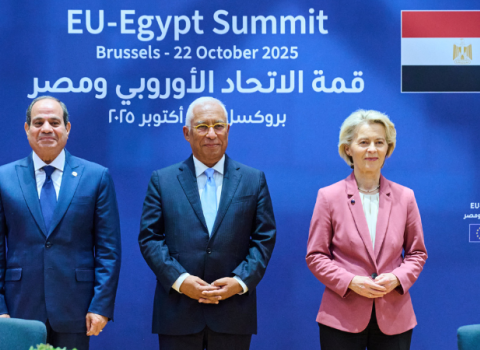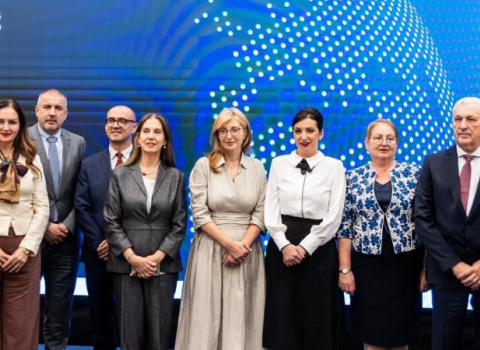The University of Manitoba - through a collective agreement with the University of Manitoba Faculty Association (UMFA) and the Intellectual Property Policy - defines all intellectual property (IP) generated at the university as being jointly owned by the university academics and the university as an institution.
Traditionally, the Technology Transfer Office (TTO) has managed university generated IP through various agreements with external partners. Although this has been a relatively successful model, the resource requirements and market expertise required have limited the ability of the TTO to effectively manage much of the research partnership driven IP.
In addition, many external partners are only able to fund research partnerships where they are in a position to manage the IP to ensure that it can be effectively taken to market. As a result, the existing approach to managing IP has prevented many external partnerships from developing - limiting the opportunities for university faculty members to obtain externally funded research grants and contracts.
Assigning intellectual property rights
To offer a more collaborative option, in cases when industry provides direct research support to a research project, from January this year, the university researchers involved are given the opportunity to decide if they would prefer to assign management of the IP generated in the project to the industry partner. Such a commitment will be made on the understanding that the university will assign its portion to the industry partner as well.
The existing process for managing IP through assignment to the TTO will be maintained and available to researchers if that is what they prefer. Both the current approach and the new approach comply with the existing Intellectual Property Policy and UMFA Collective Agreement because the university researcher and university are required to jointly agree on the assignment of the IP management to the external partner.
The expectations of the new approach
In this new model, the industry partner will be responsible for deciding whether to protect the IP and for covering all expenses for protecting the IP through its life. If the partner decides not to protect the IP then the university reserves the right to protect the IP using the existing approach.
If students are involved in collaborative research projects, their graduation date will not be delayed as a result of such involvement. However, any public communication or display of their theses may be delayed for six months (or up to a year under exceptional circumstances), in line with an existing policy of the Faculty of Graduate studies.
Researchers will be allowed to publish results from collaborative research as long as the industry partner has been given an opportunity to review the publication for proprietary information and to allow the industry partner to take steps to protect the IP. We will allow funding partners a maximum review response time - to be specified in the agreement.
The industry partner will allow the university to use the IP for non-commercial research and education purposes.
Industry partners will be allowed access to copyrightable material (works as defined in the university’s Intellectual Property Policy) for their internal use.
This approach is intended to enhance the number and quality of research partnerships by allowing research partners to directly manage the IP associated with their projects where it is appropriate. This benefits the university, the researcher and the partner.
Remove short term payments
The general approach on revenues from IP assignment will be to remove the short term payments (initial signing payment, annual and milestone payments) that often are a barrier to successful partnerships, in favour of longer term royalty payments tied to financial revenues generated by the IP.
All revenue generated from royalty streams using the traditional approach or the new approach of assigning IP management to the partner will be distributed according the Intellectual Property Policy or the UMFA Collective Agreement.
In the case of IP leading to a new product or service:
- The industry partners will pay an annual royalty on gross sales of the new product or service that is derived from the IP for the duration of its protected lifespan. The industry partner will agree to advise a third party of the royalty obligation for IP sold to the third party.
In the case of IP that leads to process improvements/efficiencies that result in increased product yield:
- The industry partners will pay an annual royalty on the derived income directly attributable to the IP for the duration of its protected lifespan. The industry partner will assess the derived value of the IP in good faith to demonstrate the value of the new process or improved efficiency to their product yield. This process will continue annually as long as the industry partners continue to assign a value to the IP. Binding arbitration may be used if the assessed value of the IP by industry (disclosed each year) is felt to be unreasonable by the University.
Engage with industry to identify opportunities
To facilitate industry partnerships, the TTO will actively engage with industry to identify research opportunities with university researchers with appropriate expertise. The TTO will also work closely with companies and the Office of Research Services to ensure appropriate funding mechanisms for the research are fully leveraged.
The assignment of IP will be managed through the TTO and template agreements will be prepared for this purpose. Royalty rates will be standardised, dependent on the type of technology and end use, and will be openly published where appropriate for transparency amongst university researchers.
Benefits to the university
- Increased research activity;
- Increased opportunities for student employment upon graduation through research projects with external partners;
- Goodwill created with industrial partners which will lead to increased support of the university, for example, donations and sponsorships;
- Increased relevance of the university in the local community;
- An opportunity to lead in the area of technology transfer and partnership with industry
Benefits to industry partners
- Increased competitiveness and profitability through better products and services;
- Access to state of the art equipment, technologies and highly trained personnel for future staff for those partners who are willing to work in the new approach but were not willing to work in the traditional approach;
- Increasing innovation in the local business community;
- Cost effective leverage of R&D funds;
- Control over the results of collaboration





 A unique international forum for public research organisations and companies to connect their external engagement with strategic interests around their R&D system.
A unique international forum for public research organisations and companies to connect their external engagement with strategic interests around their R&D system.